I made my daughter and her friend pancakes from scratch recently, using a dilapidated copy of The Joy of Cooking. My grandmother bought it in the 1950s, and though pages often fall on the floor, I cook from that book as often as I can. Despite the endless recipe options the internet provides, one of my most prized possessions is that tattered cookbook. I mean, how else would I know how to dress roadkill or cook a squirrel during a zombie apocalypse? (Seriously, it’s in there.)
Though the tablet has replaced hardcover cookbooks in countless kitchens worldwide, there are still legions of cooks who prefer the dog-eared, ingredient-splattered pages of their go-to favorites. Here are clever ways to keep your beloved cookbooks and family recipes close and well organized.
The End of an Island
An end-of-island bookshelf is a common kitchen feature that, for normal-size books, adds less than a foot of depth to the overall design. For most people, two or three shelves provide enough space for their frequently consulted favorites.
Open shelving offers ease of access, while glass cabinet doors and in-cabinet lighting add a touch of traditional formality.
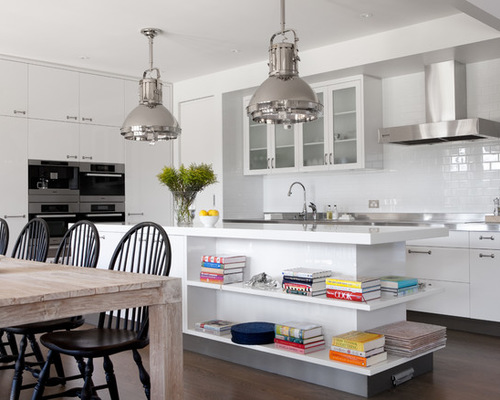
Diane Bergeron Interiors, original photo on Houzz
Contemporary wraparound shelving puts a new spin on the end-of-island bookshelf. If a counter with stools isn’t of primary concern, consider reclaiming that space for books and other sentimental kitchen wares. Not only is shelving like this good for a large collection, but it also would be just as stunning dotted with favorite pottery or vases.
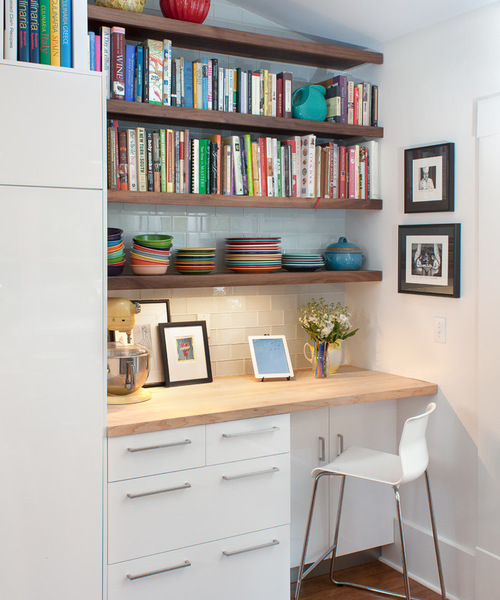
Contemporary Kitchen, original photo on Houzz
In a Kitchen Office Nook
A lot of people incorporate an office area into their kitchen as a way to maximize space. Putting in cookbook storage and display shelves connects these nooks with the kitchen while keeping things under control.
Cookbooks also add a dash of warmth and soul to kitchens, offering a way to accessorize with something useful.
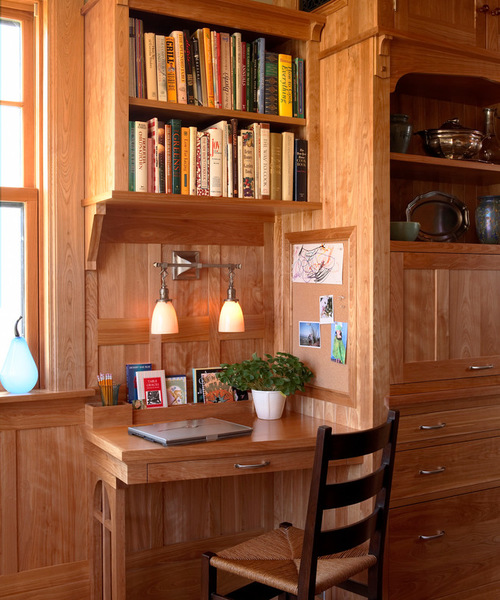
David Heide Design Studio, original photo on Houzz
A more traditional kitchen benefits just as much from exposed cookbooks. Here they break up the expanse of cabinetry and give the space a friendly, welcoming feel.
A little work surface coupled with a few rows of cookbooks invites you to sit down, peruse the pages and inspire you to recreate the delicious meals.
The Kitchen Niche
I love a good niche. Not quite a full shelf and definitely not a cabinet, a kitchen niche is a handy place to keep go-to cookbooks for easy access. Niches make the most of your kitchen footprint without compromising too much larger storage space.
An opening that’s 12 inches high by 10 inches wide can hold plenty of useful reference books, which you can rotate in and out depending on your mood (or cooking prowess).
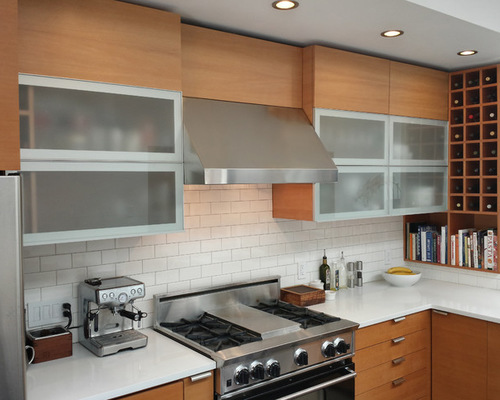
Barker Wagoner Architects, original photo on Houzz
A niche can also be a smart solution to an odd layout or awkward corner. Stash spices or baking supplies in an adjacent cabinet, and whenever inspiration strikes, your tools will be at the ready.
The Built-In Bookcase
Vertical storage to cap off a bank of cabinets gives you ample display space for books. Saving a shelf or two for family photos, vintage tea sets or travel mementos is a beautiful way to incorporate personality and practicality.
For a modern take on the kitchen bookshelf, think outside the immediate footprint. If space and the physical structure of the home allow, add a recessed bookshelf just off the kitchen for a fresh and unexpected way to store cherished cookbooks.
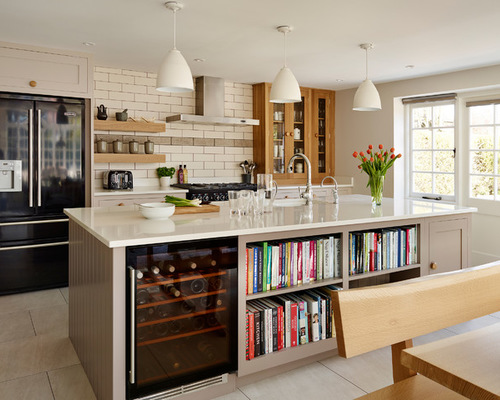
Harvey Jones Kitchens, original photo on Houzz
A bookcase incorporated into the length of an island is a fairly bold statement, and works well for those with more than a few favorite references. If you love the look and color of a full-on cookbook display, this could be a good choice for you.
It’s important to balance extra-large cabinetry with interesting design features that break up the big expanses of wood. Double-height storage often requires a library ladder to reach the uppermost regions, but what better way to keep lofty cabinets grounded than by slotting in a sliver of built-in bookcase?
Open Shelf Space
For kitchens with ample storage, giving up a closed cabinet in lieu of open shelving creates a home for well-loved cookbooks.
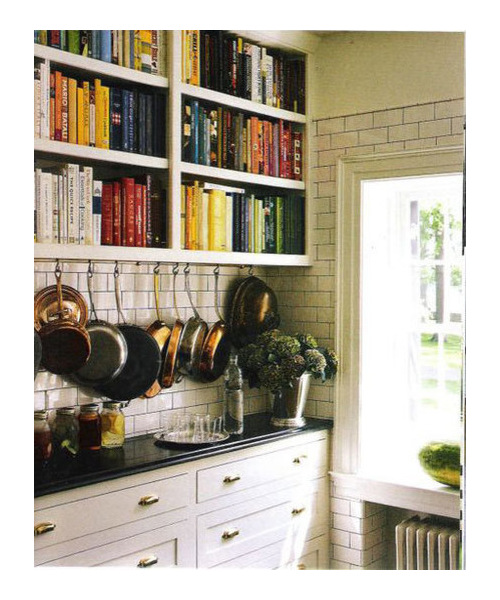
Debbie, original photo on Houzz
For experienced chefs, a large collection of cookbooks seems to go hand in hand with a wide array of beautiful pots and an impossible selection of cooking utensils. Giving your reference material pride of place says, “This kitchen is all about phenomenal food.”
Keeping your cookbooks organized by food type makes it easier to grab what you’re looking for, while grouping them by color can make for an arresting display.
Display Cookbooks and Store Kitchen Items on a Baker’s Rack
No room for built-ins, shelves or niches? Try a free-standing, “invisible” vertical shelf. Put your largest cookbooks near the bottom and graduate upward with increasingly smaller sizes for a uniform look, or mix magazines and cookbooks throughout the stack for a less restrained feel.
Regardless of the size of your kitchen or how many cookbooks you own, there’s a storage solution to meet your needs.

